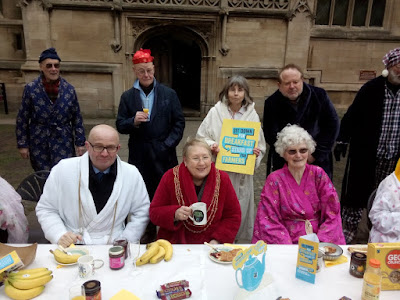This is
the first in a series of posts inspired by the Bryan Lovell Meeting at the
Geological Society, 24th to 25th Nov 2016. More details here
At the
end of two days talking about watery hazards such as flooding, drought,
landslips and sinkholes came a session focused upon communication skills to
explain those risks to the people who are affected by them. But there's a
catch: it's not enough just to use what you think are simplified words in place
of your usual engineering or geological jargon. First, you need to establish
whether you have any concepts in common to which you can refer!


